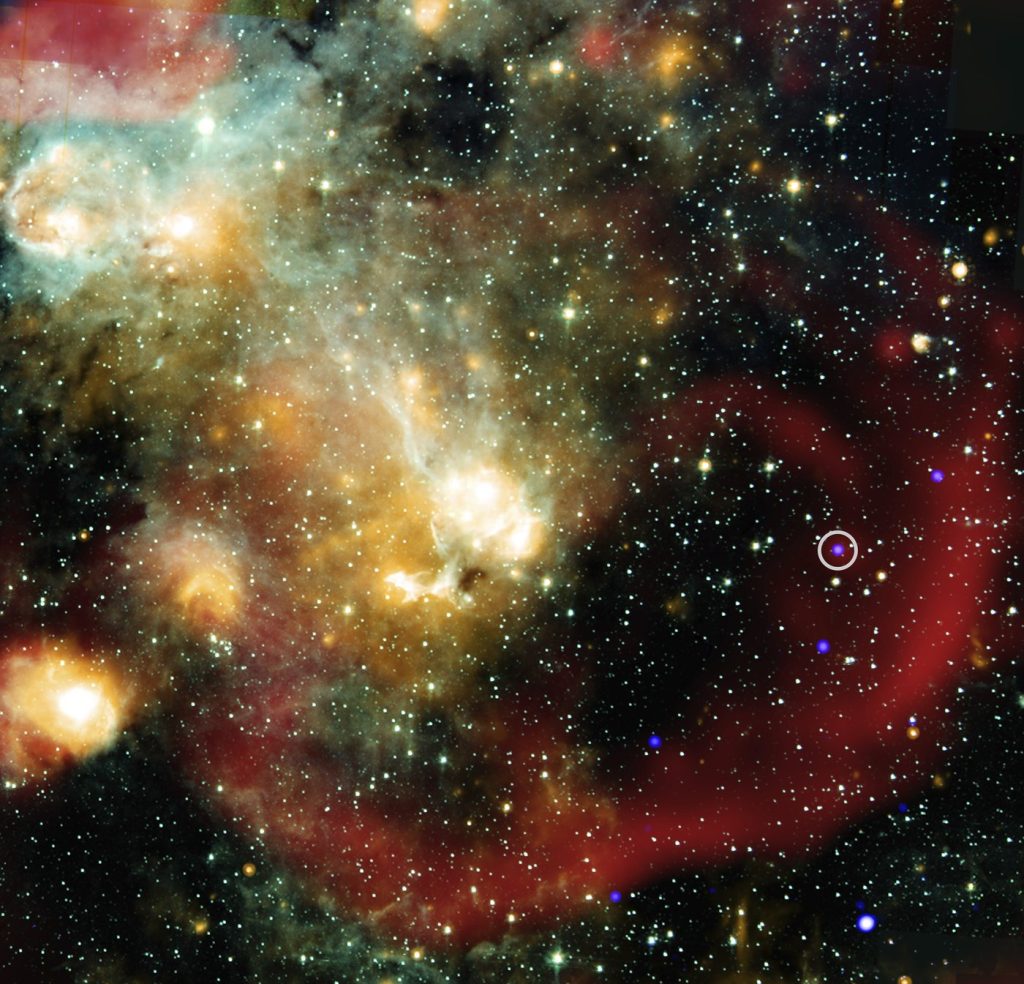Astronomers have made an intriguing discovery in the Milky Way galaxy, unveiling a strange celestial object that has sparked curiosity across the scientific community. An international research team announced on Wednesday that this enigmatic object, which may currently be classified as a star, a pair of stars, or something entirely unique, exhibits a fascinating phenomenon: it emits X-rays concurrently with radio waves. This cycle of emissions occurs every 44 minutes, particularly during phases of heightened activity.
Situated approximately 15,000 light-years away, within a region of the Milky Way teeming with stars, gas, and dust, this newly identified object has drawn attention due to its unusual characteristics. Ziteng Andy Wang, a researcher from Curtin University and the lead author of the study recently published in the journal Nature, suggests that it could potentially be a highly magnetized remnant of a dead star, such as a neutron star or a white dwarf. However, Wang also acknowledged the possibility of it being "something exotic" and previously unknown to science.
The discovery was made by NASA’s Chandra X-ray Observatory, which detected the X-ray emissions by coincidence while it was focused on a supernova remnant — the leftover debris from an exploded star. Wang noted that this was the first instance of X-rays being observed from a so-called long-period radio transient, a rare category of celestial object characterized by fluctuating radio signals occurring over extended time frames, typically tens of minutes.
One of the main challenges astronomers face is the uncertain distance from Earth, which complicates their ability to determine whether this unusual object is associated with the nearby supernova remnant. For context, it is important to note that a single light-year spans about 5.8 trillion miles.
The object, designated as ASKAP J1832-091, underwent a hyperactive phase that lasted approximately one month, during which it emitted significant X-ray radiation. In contrast, outside of this hyperactive period, the object did not show any detectable X-ray emissions. This observation has led scientists to speculate that there may be more such objects out there in the cosmos, potentially remaining unnoticed until now.
"While our discovery doesn’t yet resolve the mystery of what these objects are and may even deepen it, studying them brings us closer to two possibilities," Wang remarked. He elucidated that scientists could either be on the verge of uncovering something entirely new, or alternatively, they could be witnessing a known type of cosmic object that is emitting radio and X-ray waves in ways that have never been observed before.
Launched in 1999, NASA’s Chandra X-ray Observatory orbits thousands of miles above the Earth’s surface, dedicated to observing some of the hottest and highest-energy objects found in the universe. The ongoing research into ASKAP J1832-091 and similar objects underlines the dynamic nature of current astronomical exploration, revealing new avenues for understanding the fundamental processes at work within our galaxy.












